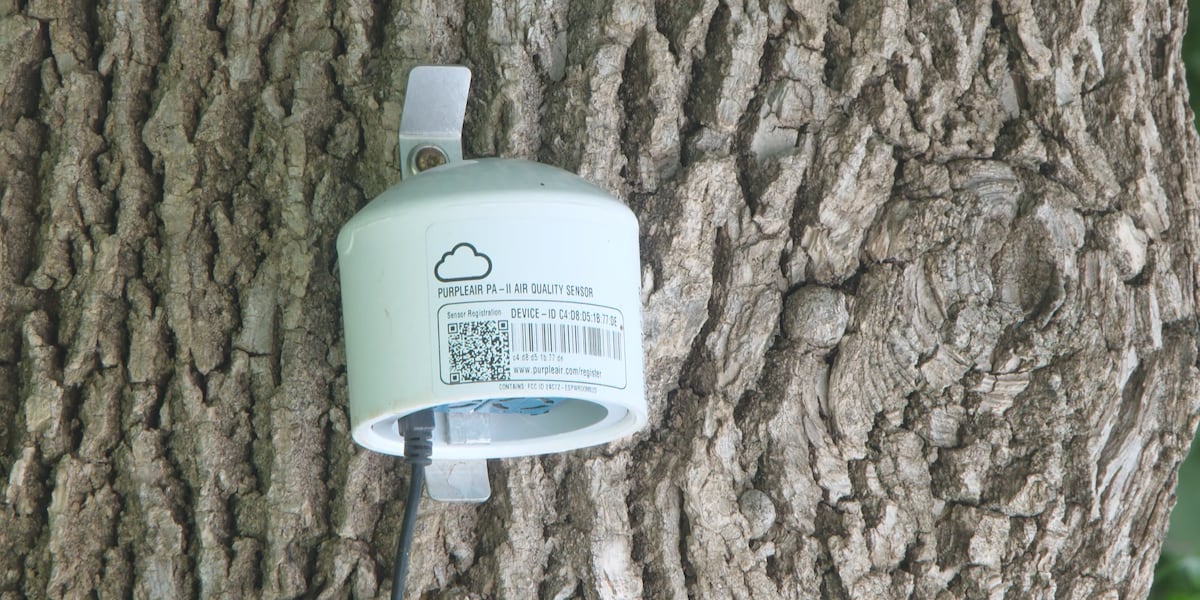
“Sioux City has an air quality problem” according to Iowa Environmental Council air monitoring network
How did your country report this? Share your view in the comments.
Diverging Reports Breakdown
“Sioux City has an air quality problem” according to Iowa Environmental Council air monitoring network
The Iowa Environmental Council installed six PurpleAir monitors around Woodbury County. The council put two in Sioux City in areas where there is a larger number of residents with asthma or respiratory issues. The monitors measure airborne particulate matter called PM 2.5. At a reading of 50, it begins to be a risk to people with respiratory issues, the council says. The group hopes to continue to push the Iowa Department of Natural Resources for a better air monitoring network. It also wants county officials to put regulations on polluters in the area. The air monitors will remain up for a full year. If you’d like to learn about how you can install an air monitor to expand the IEC air network, you can contact the Iowa environmental council’s director of marketing at kohoutek@iaenvironment.org or call (515) 615-4157.
Thursday, members of the Iowa Environmental Council hosted a tour of air monitors they installed at the beginning of summer to showcase the need for better monitoring and regulation.
The Iowa Environmental Council installed six PurpleAir monitors around Woodbury County to monitor air quality and pollutants. The council put two in Sioux City in areas where there is a larger number of residents with asthma or respiratory issues.
The monitors measure airborne particulate matter called PM 2.5. It’s microscopic and invisible to the naked eye. But those particulates can have big effects on your health. “It’s smaller than your hair; and it directly hits your bloodstream,” says Lexi McKee-Hemenway, the campaign organizer with IEC. “So, whatever is in that, it can be a slew of things: heavy metals, sulfur, carbon dioxide, whatever it might be, it’s hitting your bloodstream and can have a number of negative effects on you.”
Those monitors are in areas with high rates of respiratory issues: Geneva Street and Market Street in Sioux City. They have seen high levels on PM 2.5 since they were installed. At a reading of 50, it begins to be a risk to people with respiratory issues. “Back around July 14th, we were averaging about 153, 154; and over time our quality has gotten a little bit better.” said McKee-Hemenway. “It might not be constant, all day every day, but you see these high spikes enough that it should be ringing some alarm bells.”
McKee-Hemenway continued, “We are surrounded by polluters. We have meat packing plants, fertilizer plants, coal plants that are all old, so they produce more of that PM 2.5. And, when we’re specifically here on Geneva Street, you’re not very far from any of these. You’re about six miles from a meat packing district, two and a half miles from concrete dust, and about sixteen miles from a coal plant.
McKee-Hemenway emphasized that the poor air quality in Woodbury County isn’t solely due to its industrial surroundings. She pointed out when compared to other similarly sized counties across Iowa the difference is striking. “Woodbury County in comparison to other large counties like Linn County, or Polk County where they have much larger populations and more industry, they’re not experiencing the same amount of air pollution as Siouxlanders are,” said McKee-Hemenway. “Woodbury County saw a 15% increase over this past decade in air pollution, but nowhere else in Iowa was seeing that.”
The Iowa Environmental Council hopes to continue to push the Iowa Department of Natural Resources for a better air monitoring network. The council also wants county officials to put regulations on polluters in the area. “I think the best thing we can do it to push these industries who are major polluters to be more transparent and putting caps on their pollution. And asking the people who have the power to put those caps on and those regulations to do something about it,” said McKee-Hemenway, “Some things are hard, but we all deserve clean air, and we deserve more, and better, air monitoring. And that burden shouldn’t be put on the citizens.”
The air monitors will remain up for a full year. If you’d like to learn about how you can install an air monitor to expand the IEC air network, you can contact the Iowa Environmental Council’s director of marketing at kohoutek@iaenvironment.org.
Want to get the latest news and weather from Siouxland’s News Source? Follow these links to download our KTIV News app and our First Alert Weather app.
Copyright 2025 KTIV. All rights reserved.
